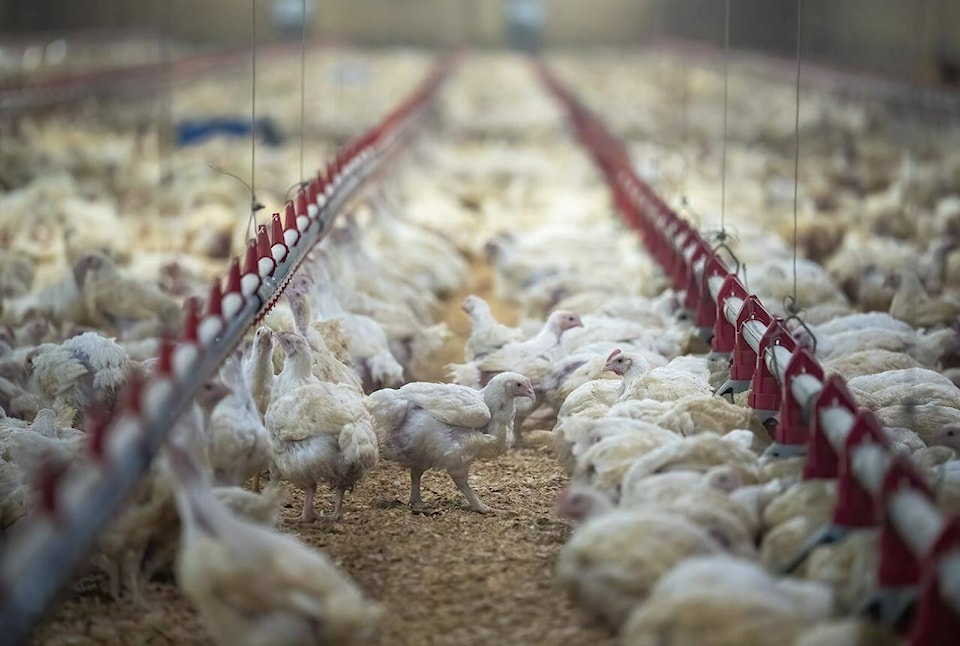Lacombe-area poultry producer David Hyink is hopeful a new research project will fill in some of the blanks on avian flu and offer strategies to protect the industry in the future.
Last year, 1.4 million birds were culled at dozens of Alberta farms as a precaution after the Highly Pathogenic Avian Influenza (HPAI) Virus was detected. By the fall, nearly 60 outbreaks were identified on poultry farms.
The culprit was a new strain of HPAI that swept across the U.S. and Canada and for the first time was associated with widespread mortality in wild birds, says a final report on the outbreak prepared for Alberta Agriculture and Irrigation.
Fortunately, there has been no repeat so far this year with no commercial cases of avian flu detected on Alberta farms.
However, the threat of the virus re-emerging continues and that is why an arm’s-length government agency, Results Driven Agriculture Research (RDAR), Alberta Chicken Producers, Alberta Turkey Producers and Egg Farmers of Alberta are backing a $733,800 research project on the virus, led by Dr. Faizal Careem, of University of Calgary’s Faculty of Veterinary Medicine.
“With this study, we’re very hopeful it can provide some clarity to us on the vehicle of transmission,” said Hyink, who serves as chair of Alberta Chicken Producers. “It should help us know how to stop the spread and (provide information) on how the virus has been spreading.
“Also, this should help calm our farmers. They’re already operating at the highest level of bio-security and they’re doing everything they can. Up until now, they don’t really know what is effective and what isn’t.”
The impact of the virus varied at various points of the year in 2022. It appeared to hit Alberta’s wild bird population the hardest between April and June during spring migration and then petered out. In September and October reports of sick or dead birds increased slightly as birds passed through the province during fall migration and additional outbreaks on poultry farms were detected in the fall.
While it is a positive sign that avian flu outbreaks have not been reported this year poultry producers cannot rest easy without more information, said Hyink.
“Because we don’t have the answers this study will provide we’re kind of on pins and needles every season just wondering what might happen every time the bird migration comes through.”
Maria Leslie, information officer for the Alberta Poultry Industry Emergency Management Team, said how the avian flu is transmitted remains a “bit of a grey area”.
“That’s why this research project is so important because it will help inform us better. The farmers are doing the best they can with what they know,” she said.
Leslie said the project will likely take a couple of years to collect and analyze data before providing recommendations on best to protect the province’s poultry industry.
Alberta Turkey Producers executive director Cara Prout said avian flu “devastated” its industry last year.
“Infections in commercial operations occurred in both the spring and fall, leaving little opportunity to re-grow production losses caused by birds ordered destroyed combined with the duration of time time to complete the rigour cleaning and disinfection process,” Prout in a statement.
“Research projects supported by RDAR will help us gain a more robust understanding of the virus and will enable us to prepare our industry to mitigate risk effectively.”
